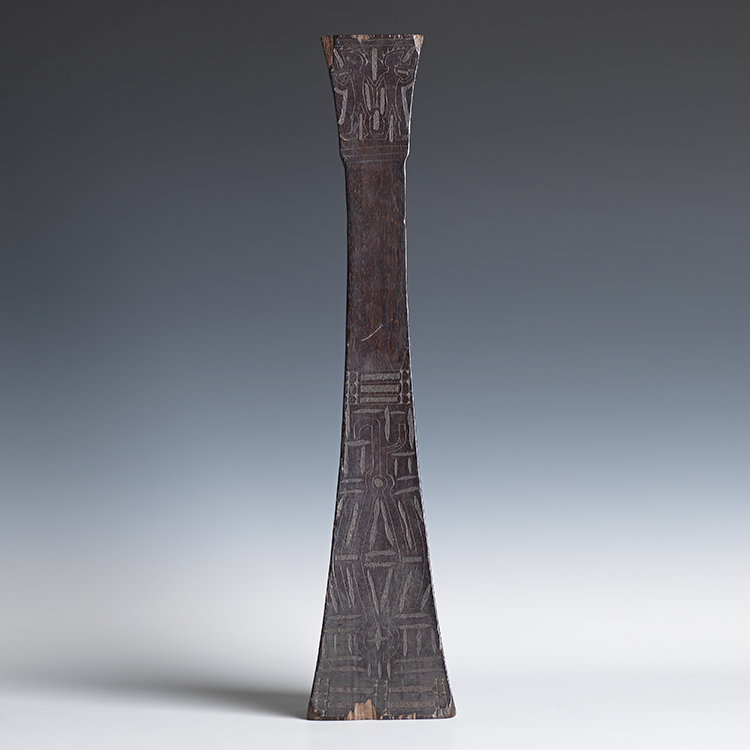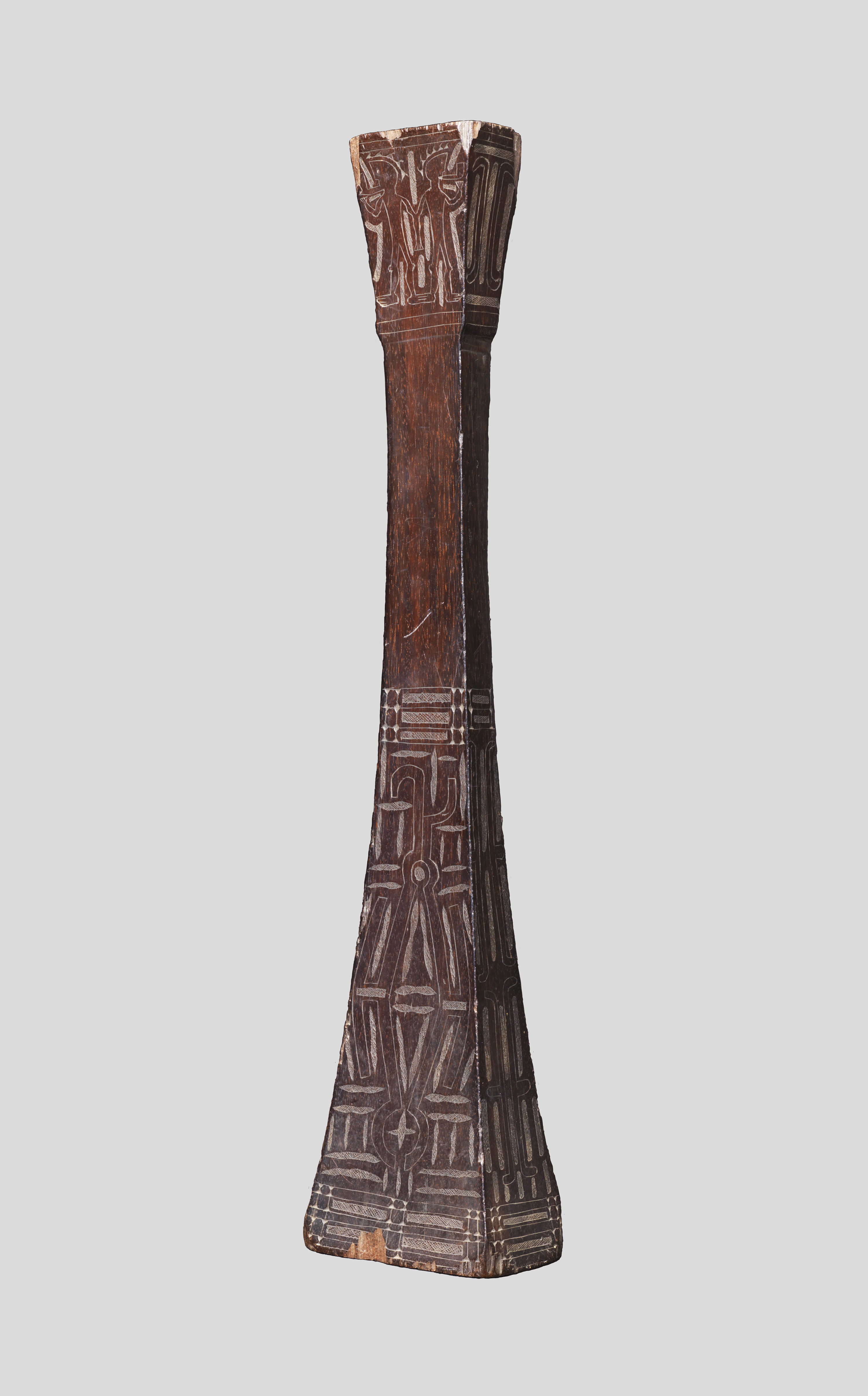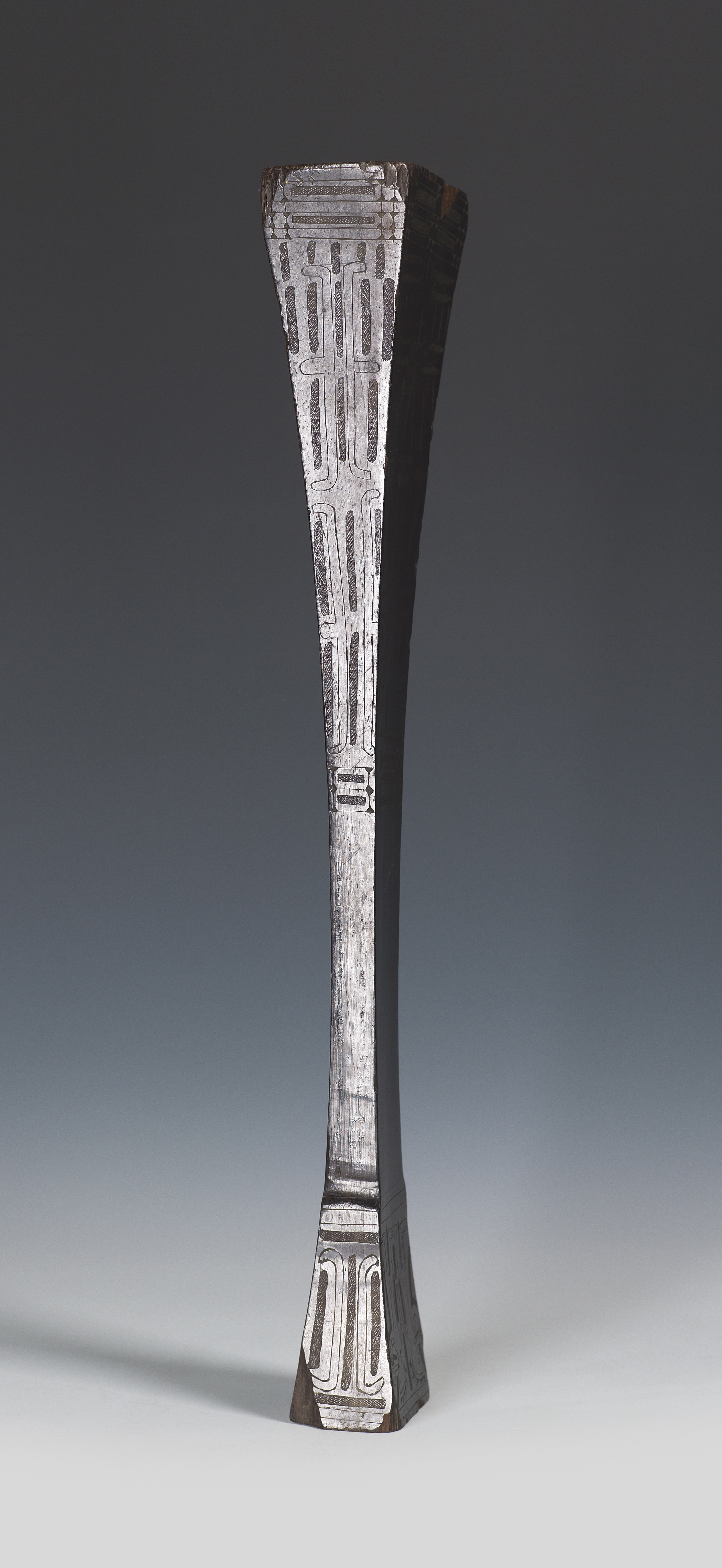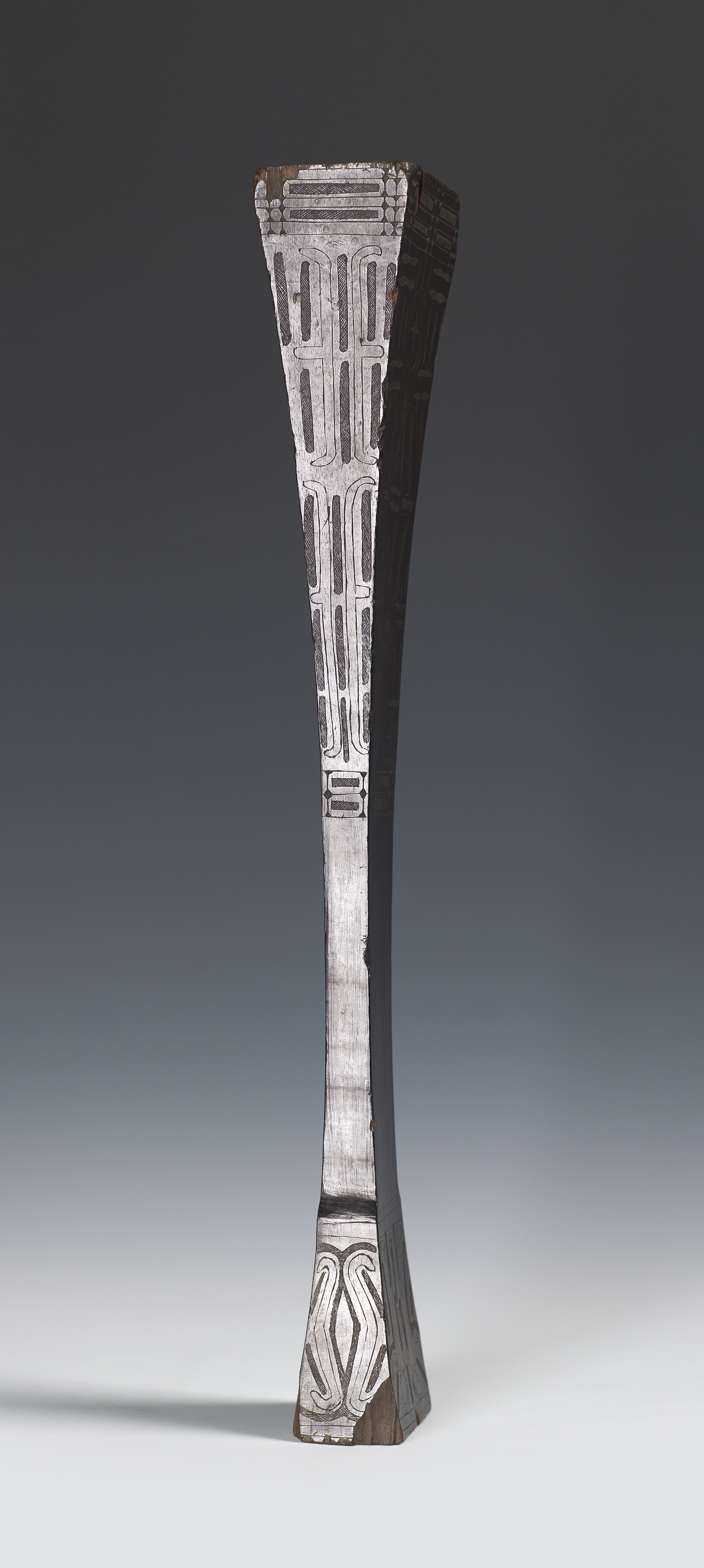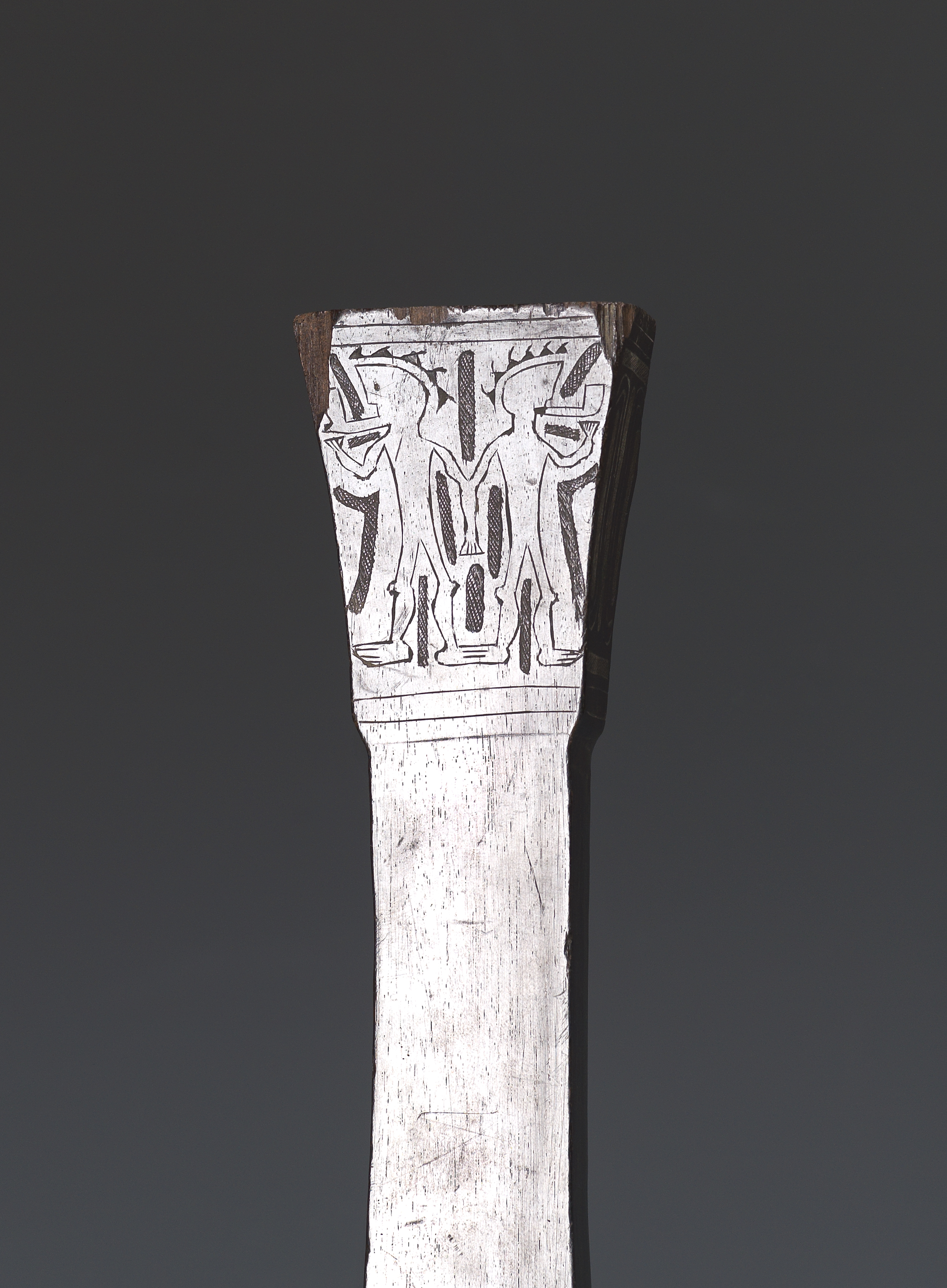The Guianas (Venezuela, Guiana and the Orinoco Basin)
Circa 1790-1830
Carved and incised hard wood
42 cm high x 9 cm wide x 5 cm deep
Dutch Colonial collection, Amsterdam
This late 18th century, block-shaped weapon, used for hand-to-hand combat by the Arawak/Carib tribes of the Guianas, represents a rare example from a body of extant early war clubs from the Orinoco-Amazonian lowlands.
War clubs are well documented for this region from the time of first contact in the 16th and 17th centuries, both in the form of descriptions and illustrations, as well as through the artifacts that are preserved in European collections. The Guiana clubs were evidently desirable objects of curiosity and exoticism – perhaps due to the Arawak/Caribs’ reputation as “cannibals’”. Over a span of about 200 years they entered the Wunderkammers and libraries of many of Europe’s most illustrious collectors, including John Tradescant, the English gardener and botanist, who obtained several clubs around 1654 (now in the Ashmolean Museum, Oxford), Ferdinando de Medici (1631) and the Danish royal family (see Stople 1927 and Bray 2001 for other notable early acquisitions.)
The club is finely incised on all six faces with a combination of abstract and figurative designs that appear to describe shamanic rites or a mythic narrative. Two male figures in feathered headdresses (possibly the divine hero twins of local mythologies) are depicted on opposite sides of grip end of the shaft. Significantly, one pair is shown smoking a Dutch-style pipe, which speaks to the process of European colonization and to the trade in tobacco, but also to indigenous practices. Smoking and snuffing the native tobacco, widespread in the region, are known to have had mild psychoactive effects, causing intoxicated states that were used to enhance warfare, hunting, healing and other activities. In the Orinoco region, tobacco smoke was also the medium for communicating with and feeding the spirits and dead ancestors.
A serpentine motif represented on the top of the club suggests a stylized squatting figure, possibly a water spirit or “frog woman” also prominent in Guiana myth. The spirit’s eyes and face are formed by webbed feet and tail (duck?) and the sex (male? female?) indicated by the naturalistic image of a freshwater fish or dolphin. The element has visual parallels in the related Taino art styles, as do the concentric circle and hook motifs embedded in a diamond weave or net pattern that evokes fishing nets and knotted hammocks. The motifs are drawn with precise fluid lines and the negative space or background infilled with extremely fine crosshatching. The club has a rich deep patina; there are small areas of damage along the edge, especially at the base and top.
Reference: Warwick Bray, One Blow Scatters the Brains, An Ethnographic History of the Guiana War Club in McEwan, Colin, C Barreto and E. Neves, Unknown Amazon, (British Museum 2001); Hjalmar Stolpe, Collected Essays in Ornamental Art. Atlas (Stockholm 1927): a comprehensive, illustrated catalogue of early Amazonian clubs in European collections, including related pieces in Leiden, Copehagen, Berlin, Bristol, Cambridge, Vienna etc, especially Plate XIIIl, figs. 6 and b, an example in the Musée de Antiquités, Lyon.
SOLD

